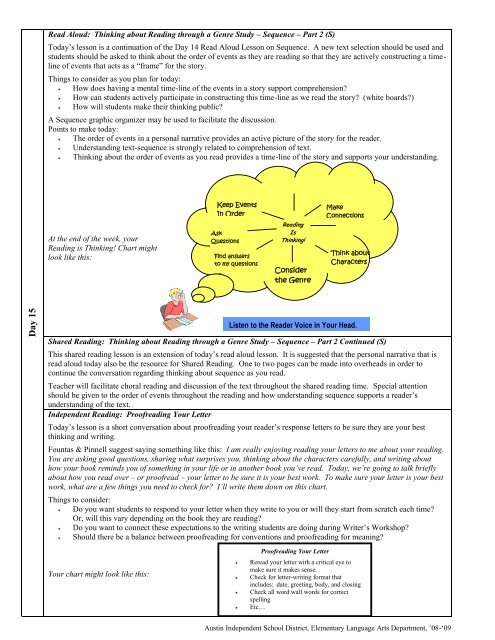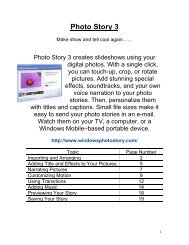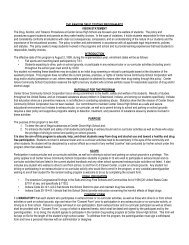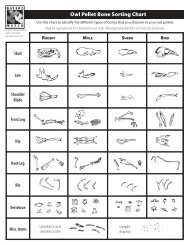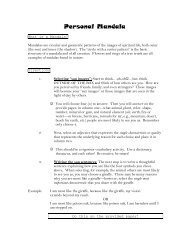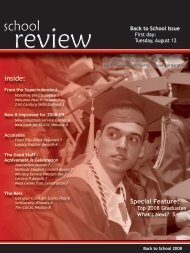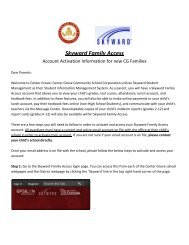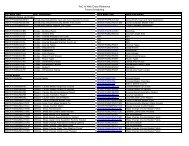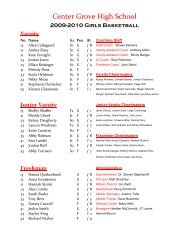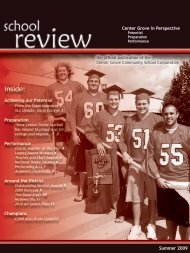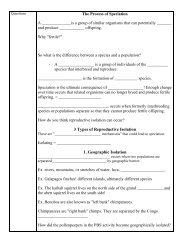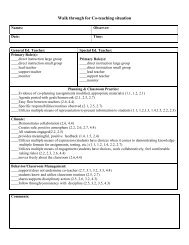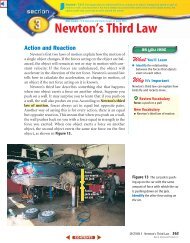The First 20 Days of Reading: Intermediate - Center Grove ...
The First 20 Days of Reading: Intermediate - Center Grove ...
The First 20 Days of Reading: Intermediate - Center Grove ...
You also want an ePaper? Increase the reach of your titles
YUMPU automatically turns print PDFs into web optimized ePapers that Google loves.
Day 15<br />
Read Aloud: Thinking about <strong>Reading</strong> through a Genre Study – Sequence – Part 2 (S)<br />
Today‟s lesson is a continuation <strong>of</strong> the Day 14 Read Aloud Lesson on Sequence. A new text selection should be used and<br />
students should be asked to think about the order <strong>of</strong> events as they are reading so that they are actively constructing a timeline<br />
<strong>of</strong> events that acts as a “frame” for the story.<br />
Things to consider as you plan for today:<br />
How does having a mental time-line <strong>of</strong> the events in a story support comprehension<br />
How can students actively participate in constructing this time-line as we read the story (white boards)<br />
How will students make their thinking public<br />
A Sequence graphic organizer may be used to facilitate the discussion.<br />
Points to make today:<br />
<strong>The</strong> order <strong>of</strong> events in a personal narrative provides an active picture <strong>of</strong> the story for the reader.<br />
Understanding text-sequence is strongly related to comprehension <strong>of</strong> text.<br />
Thinking about the order <strong>of</strong> events as you read provides a time-line <strong>of</strong> the story and supports your understanding.<br />
At the end <strong>of</strong> the week, your<br />
<strong>Reading</strong> is Thinking! Chart might<br />
look like this:<br />
Keep Events<br />
In Order<br />
Ask<br />
Questions<br />
Find answers<br />
to my questions<br />
<strong>Reading</strong><br />
Is<br />
Thinking!<br />
Consider<br />
the Genre<br />
Make<br />
Connections<br />
Think about<br />
Characters<br />
Listen to the Reader Voice in Your Head.<br />
Shared <strong>Reading</strong>: Thinking about <strong>Reading</strong> through a Genre Study – Sequence – Part 2 Continued (S)<br />
This shared reading lesson is an extension <strong>of</strong> today‟s read aloud lesson. It is suggested that the personal narrative that is<br />
read aloud today also be the resource for Shared <strong>Reading</strong>. One to two pages can be made into overheads in order to<br />
continue the conversation regarding thinking about sequence as you read.<br />
Teacher will facilitate choral reading and discussion <strong>of</strong> the text throughout the shared reading time. Special attention<br />
should be given to the order <strong>of</strong> events throughout the reading and how understanding sequence supports a reader‟s<br />
understanding <strong>of</strong> the text.<br />
Independent <strong>Reading</strong>: Pro<strong>of</strong>reading Your Letter<br />
Today‟s lesson is a short conversation about pro<strong>of</strong>reading your reader‟s response letters to be sure they are your best<br />
thinking and writing.<br />
Fountas & Pinnell suggest saying something like this: I am really enjoying reading your letters to me about your reading.<br />
You are asking good questions, sharing what surprises you, thinking about the characters carefully, and writing about<br />
how your book reminds you <strong>of</strong> something in your life or in another book you’ve read. Today, we’re going to talk briefly<br />
about how you read over – or pro<strong>of</strong>read – your letter to be sure it is your best work. To make sure your letter is your best<br />
work, what are a few things you need to check for I’ll write them down on this chart.<br />
Things to consider:<br />
Do you want students to respond to your letter when they write to you or will they start from scratch each time<br />
Or, will this vary depending on the book they are reading<br />
Do you want to connect these expectations to the writing students are doing during Writer‟s Workshop<br />
Should there be a balance between pro<strong>of</strong>reading for conventions and pro<strong>of</strong>reading for meaning<br />
Your chart might look like this:<br />
Pro<strong>of</strong>reading Your Letter<br />
Reread your letter with a critical eye to<br />
make sure it makes sense.<br />
Check for letter-writing format that<br />
includes: date, greeting, body, and closing<br />
Check all word wall words for correct<br />
spelling<br />
Etc…<br />
Austin Independent School District, Elementary Language Arts Department, ‟08-„09


